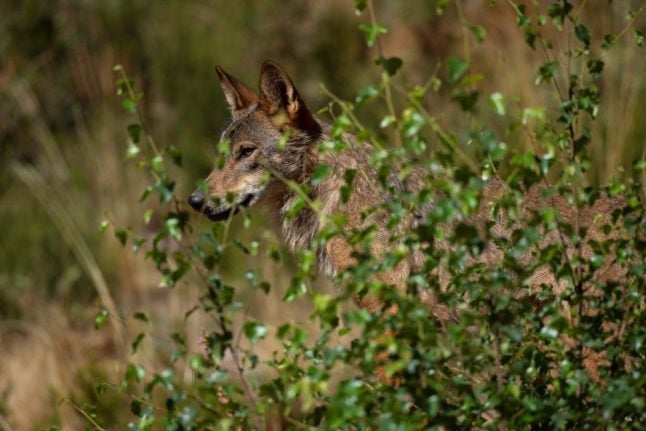The Iberian wolf (lobo ibérico) is a subspecies of grey wolf that lives in the Iberian Peninsula. They generally live for 3 to 4 years in the wild, measure 130-180cm long and can weigh up to 50kg.
Historically the Iberian Wolf roamed throughout Spain, but after almost going extinct and becoming a protected species, the population is now concentrated in a specific part of the country.
READ ALSO: Spain’s livestock farmers raise alarm over rise in wolf attacks
Despite the species being on the brink of extinction in the 1970s, the Iberian wolf population has been expanding and in the 21st century can be found mainly in the northwest of Spain. In fact, after recent changes in hunting legislation, wolves have become a controversial topic in recent years.

How many wolves are there in Spain?
It’s hard to say exactly, but the most recent data from the Ministry for Ecological Transition (2012-14) reported 297 wolf packs, of which 278 are exclusive, meaning they are only present only in one Spanish region.
Several environmental bodies put the number of individual wolves in Spain roughly somewhere between 2,000 and 2,500.
Where do the wolves live?
The wolf population in Spain is concentrated in the north and north-west of the country, mainly in Castilla y León, Galicia, Cantabria and Asturias. There are also smaller populations in nearby mountain areas such as the Basque Country, La Rioja, Guadalajara and northern Portugal.
Some of the forested areas in the north of Spain where lobos (wolves) have been spotted in recent years include Sierra de la Demanda, Somiedo, Cadí-Moixeró, Gorbeia, Do Courel, O Invernadeiro, Saja-Besaya, Picos de Europa and Sierra de la Culebra.
In the mountainous areas of northern Andalusia there are also some smaller populations, although they are isolated in the southern sub-plateau and quite rare. Some of these areas include Sierra de Andujar, Despeñaperros, Sierra de Cardeña y Montoro, Sierra de Hornachuelos, Valle de Alcudia and Sierra Madrona, Sierra de Guadarrama and Sierra de Gredos.

The north-west really does dominate wolf populations in Spain. In fact, 96 percent of the wolves in Spain are found in Castilla y León, Galicia and Asturias, according to the latest data from Spain’s Ministry of Ecological Transition.
READ ALSO: Spain farmers jailed for illegal water tapping at nature reserve
The region with the biggest Iberian wolf presence is Castilla y León. According to the latest census data, Castilla y León region is home to 179 packs, 163 of which live exclusively in the region.
However, in terms of population density north-east Galicia has the highest density of wolves anywhere in the world, according to a study published in the scientific journal Recursos Naturais reported Europa Press, based on the wolf population there between 2019 and 2020.
The politics of wolves
In Spain in recent years wolves have become somewhat of a controversial political topic. In 2021 the Spanish government took measures to protect the Iberian wolf in Spain by banning its hunting in large parts of the country, including it on a list of species under a Special Protection Regime.
However, farmers in Spain, particularly in the northern regions where wolves are most prevalent, have complained that the ban has led to a spike in attacks on their livestock.
In 2022, farmers across Spain reported 12,898 wolf attacks, a 20 percent increase on the year before, according to farmers’ unions. Many farmers and hunting lobby groups have called for a reversal of the law.
This is not a topic of debate solely in Spain, however. Around Europe too, politicians are weighing the pros and cons of balancing species protection and the impact on farmers and rural communities.
In September of 2023, almost exactly two years after the Spanish legislation was passed, the European Commission president called for a reconsideration of protection rules for wolves around Europe.




 Please whitelist us to continue reading.
Please whitelist us to continue reading.
Member comments